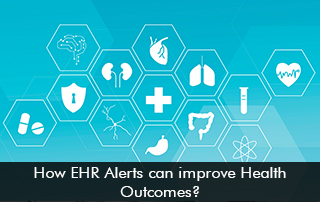Electronic Medical Records software are robust solutions that have helped to streamline clinical, administrative, and financial workflows. EMR systems have been rapidly implemented by hospitals throughout the USA to enhance the care delivery process and even improve patient safety. The effective use of the EHR software alerts feature can simplify transitions of care, help with chronic care management, and boost patient safety.
The importance of EMR software alerts for health systems
Effective Electronic Medical Records (EMR) software alerts functionality such as admission, discharge, and transfer (ADT) notifications and reminders can help improve clinical efficiency and support care coordination. These alerts promptly communicate crucial patient information to clinicians through the software interface.
3 ways EHR alerts can be used to enhance patient outcome levels
Electronic health records software provides reliable and safe access to patients’ complete medical information. This helps providers make accurate decisions and aid in patient diagnosis.
The following are 3 ways physicians can use EMR alerts to enhance health outcome levels and streamline clinical operations.
- Transitions of care – Provider communication is crucial during transitions of care. This helps to ensure that all the care teams involved have accurate patient information to support their decision-making. ADT alerts that are provided by the powerful EHR systems can help care teams be updated with relevant patient information this helps to enhance care coordination and ultimately reduce hospital readmissions. ADT information can be shared across the care continuum and monitor a patient’s progress effectively.
- Chronic care management – EHR alerts also help clinicians with clinical decision support and treat patients with various chronic diseases. Notifications can aid providers to diagnose and start treatment for the chronic disease earlier as clinicians are reminded to screen for different conditions. A 2017 study about EMR alert effects on screenings for hepatitis C virus among baby boomers revealed that these alerts can help to streamline patient diagnosis.
- Patient safety – Prescription alerts functionality offered by the EHR software can improve patient safety. These alerts can warn doctors of potential adverse drug events such as drug interactions with other medications and provide allergy warnings. Patients are saved from allergic reactions and any potential drug interactions.
The useful reminders about patient status updates, test screenings, and care delivery is a simple way to improve health outcome levels and care quality.






